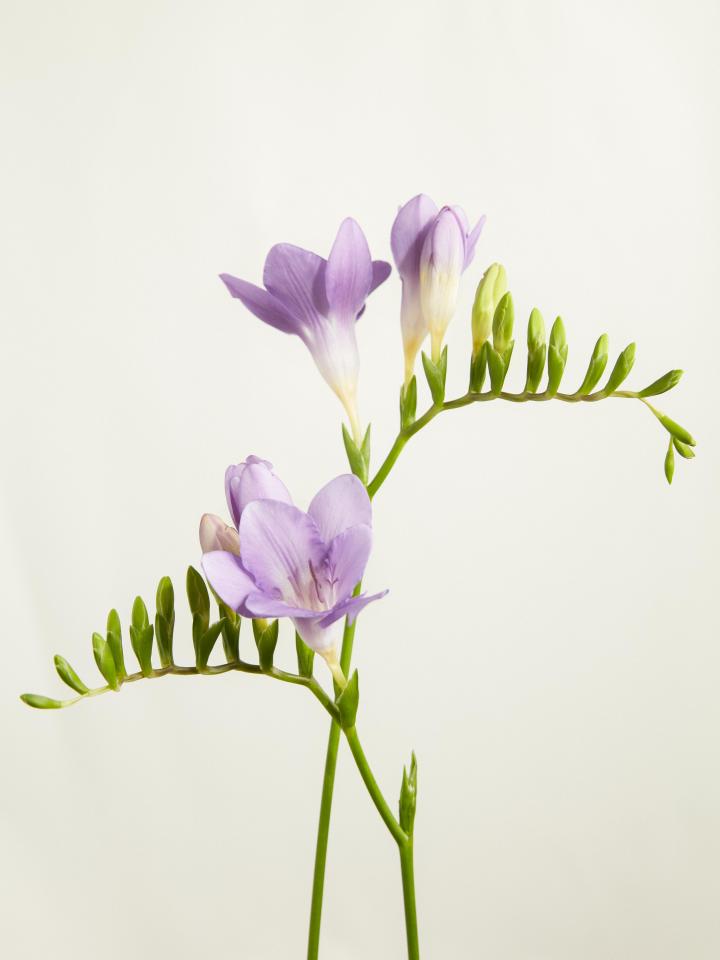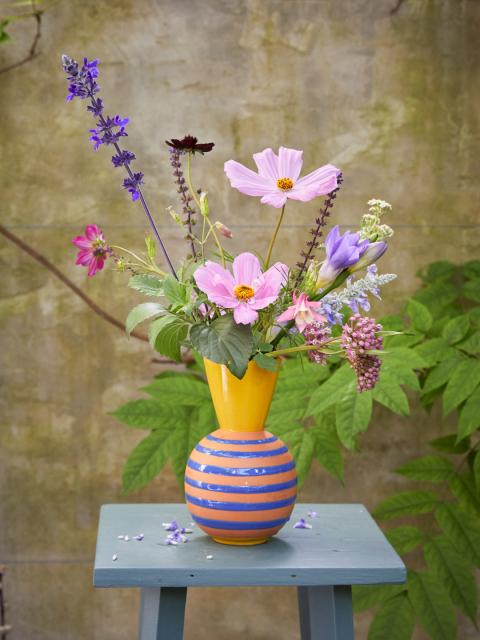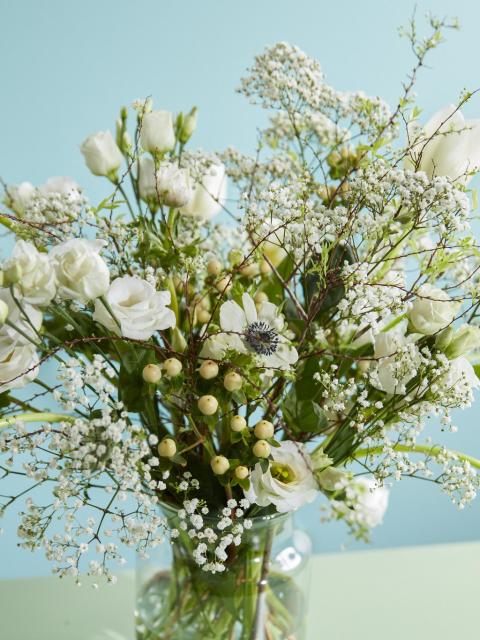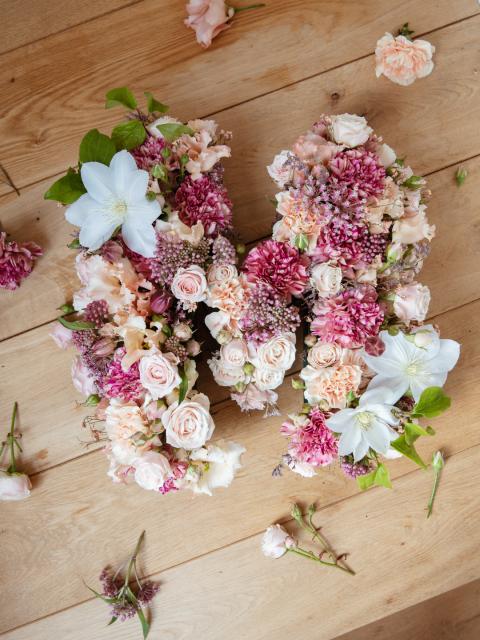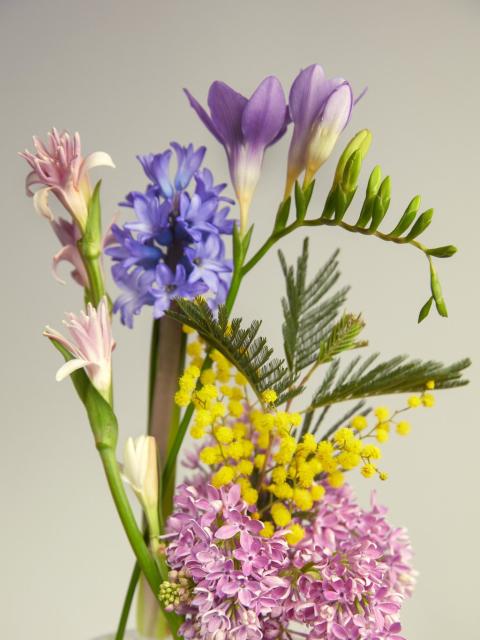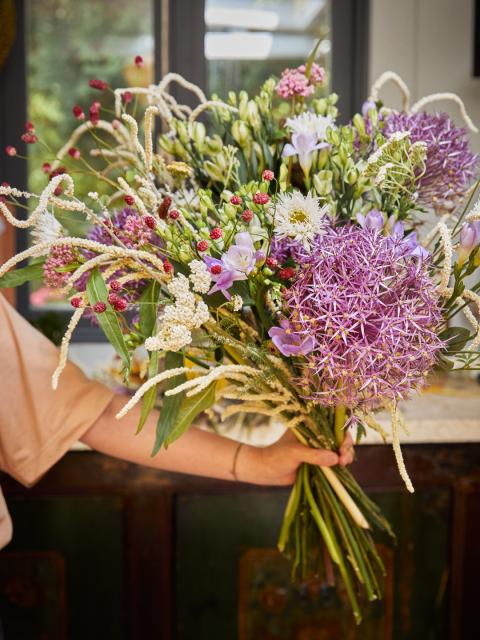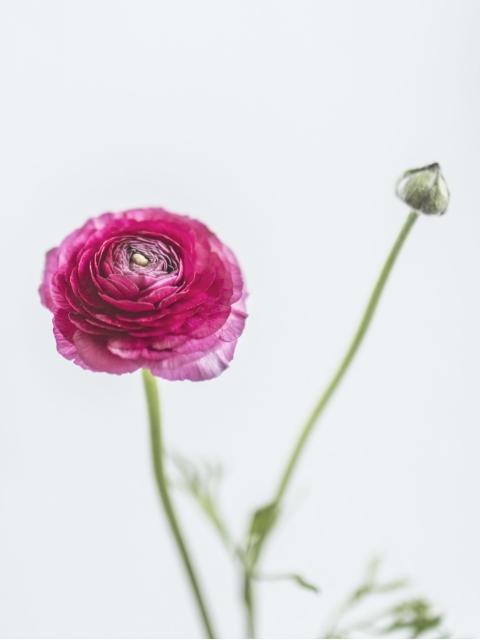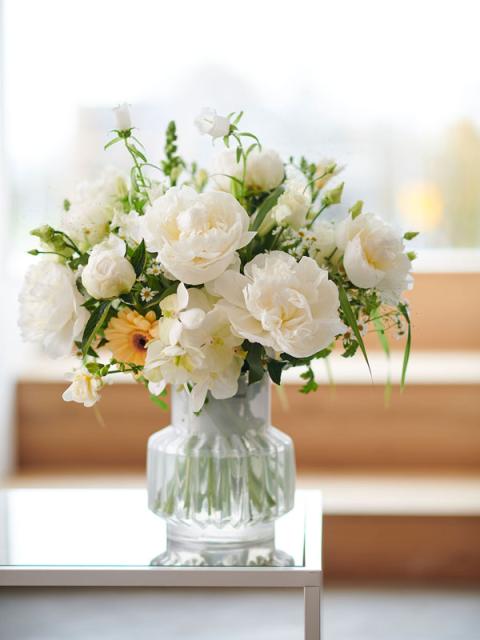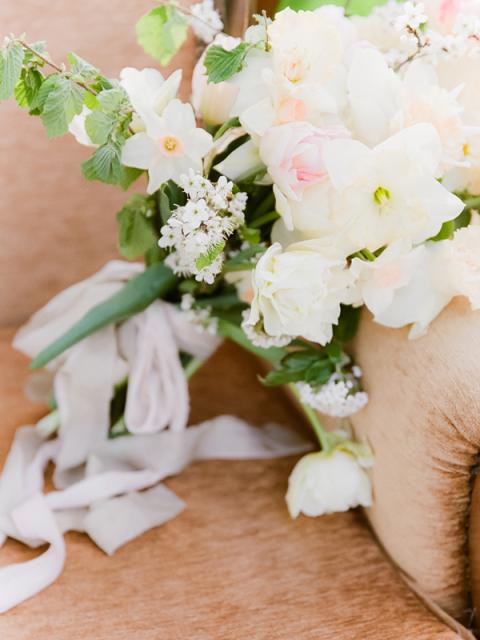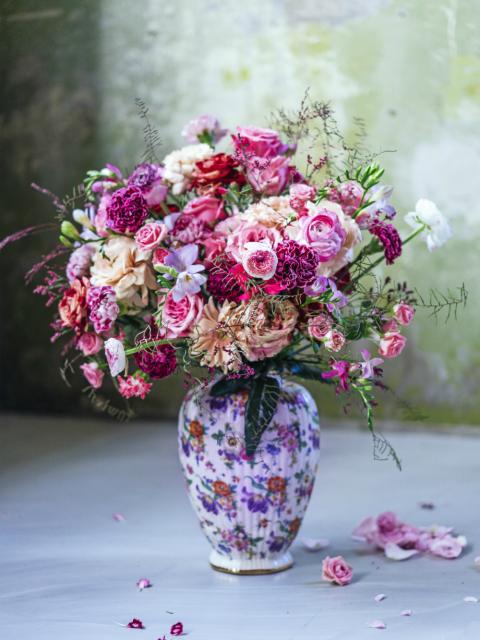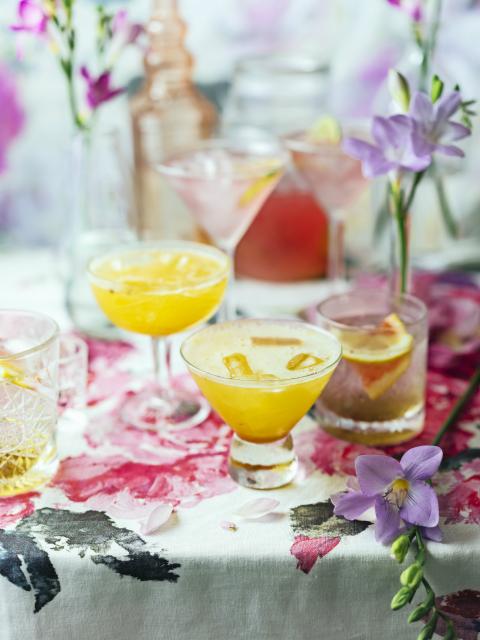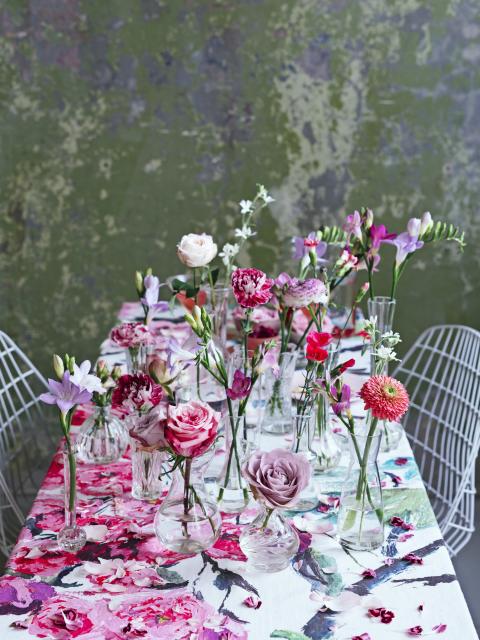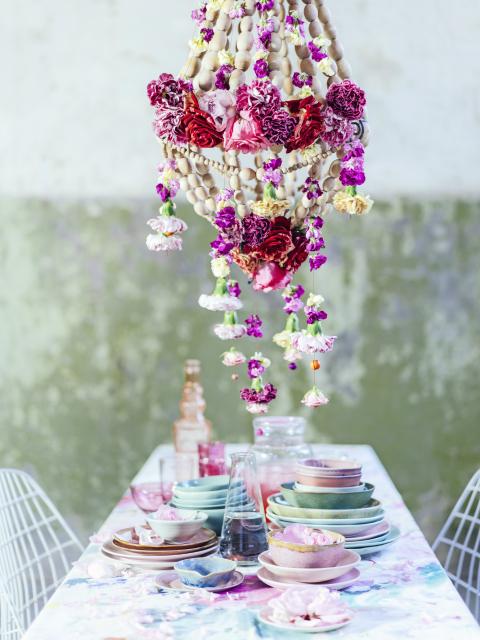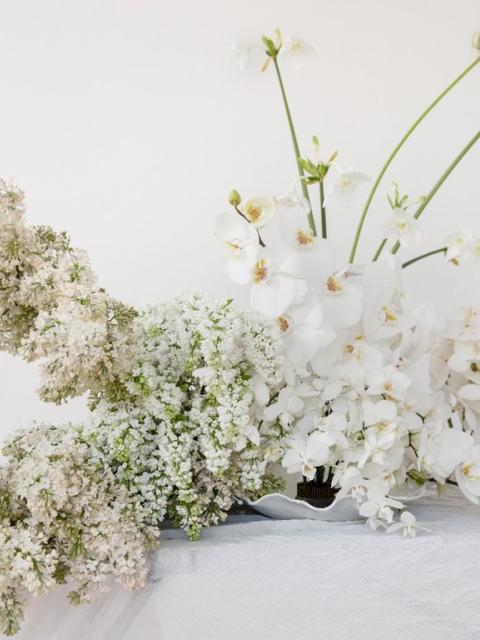FREESIA: CHARACTERISTICS AND FLOWERING
Freesias are known for their unusual shape, beautiful colour and wonderful fragrance. Freesia grows on a slender, upright stem about 30-45 centimetres long. The flowers grow neatly in a row (this is called a ‘comb’), have a characteristic trumpetlike shape and are often slightly curled at the edges. There are single-flowered, semi-double-flowered and double-flowered varieties.
Freesias come in a variety of colours, such as white, yellow, orange, red, blue, pink and purple. There are also bi-coloured or multi-coloured varieties. Freesias are summer bloomers (from June-August) and have a flowering period of about 4-6 weeks.
Freesia belongs to the lissen family (Iridaceae), which also includes flowers such as gladioli, irises and crocuses. Many freesias have a lovely sweet fragrance, making them a natural perfume for your home and ensuring that they're an especially popular choice for bouquets and in beauty products such as perfumes.
WHAT TYPES OF FREESIAS ARE THERE?
There are about 20 different types of freesias. In the cut flower trade, distinctions are mainly made between single-flowered, semi-double-flowered and double-flowered varieties. As far as the official main species are concerned, the following 5 species of freesias are the best known:
- Freesia refracta: this is the most common and well-known species from which many cultivars originate from. Freesia refracta has diverse colours and the scents of this species range from subtle to strong.
- Freesia corymbosa: this species has small, orange or yellow flowers with a strong fragrance. Freesia corymbosa, together with freesia refracta, is one of the original species from which many hybrids have already emerged.
- Freesia hybrid: today we see many freesia hybrids, or freesias created by crossing different species. Freesia hybrids are therefore very diverse and flower in different colours, differ in strength of scent and have different characteristics, such as the number of petals and quantity of flowers per stem.
- Freesia alba: this is one of the original, naturally occurring freesias. Freesia alba is often white in colour, sometimes with light shades of yellow or pink. This variety has a lovely, strong fragrance. This variety is often used in bridal bouquets or bouquets for wedding anniversaries.
- Freesia laxa: this variety is also called mock freesia. Freesia laxa is known for its thin stems on which grow bell-shaped, blood-red flowers with occasional hints of white, orange or purple. This species has flower clusters with pendulous flowers (instead of a ‘comb’).
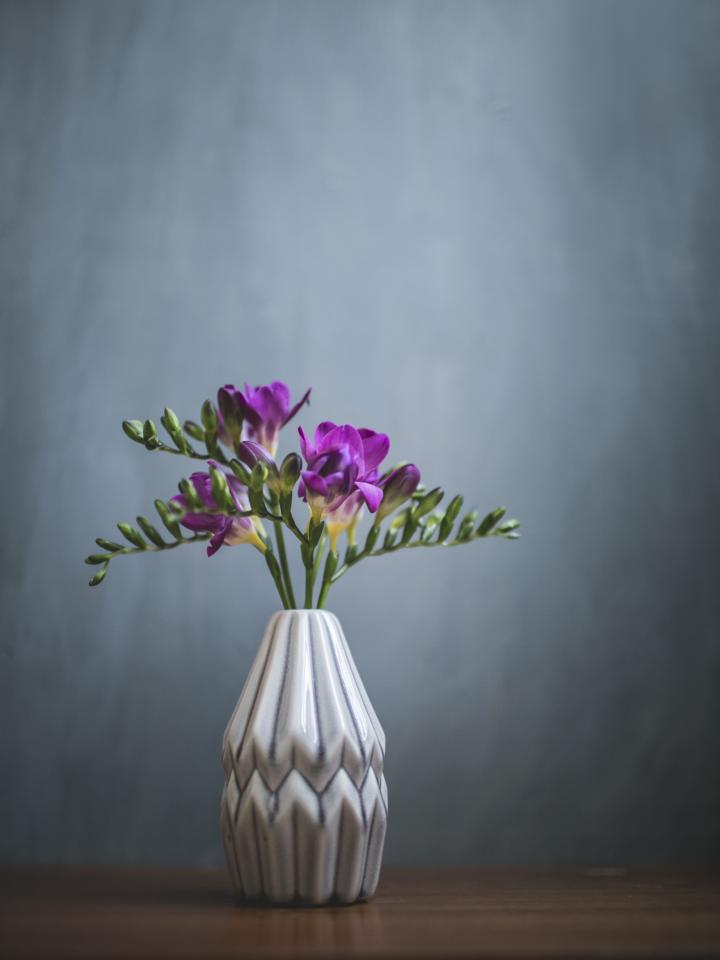
FREESIAS IN YOUR VASE
If you've brought home a lovely bunch of sweet-scented freesias, you'll want to enjoy them for as long as possible. Check out these tips and tricks to keep flowers beautiful in your vase.
- When choosing freesias, select a bunch with nice, full buds. If it's not a white freesia, also make sure the bud is nicely coloured rather than brown or discoloured - this will ensure the bloom that emerges will be of good quality and will stay beautiful in your vase for longer.
- Let the freesias fill up with water before you take them out of their packaging, so first put them into water first without taking them out of their packaging.
- Using a sharp knife, cut off about 3-5cm from the flower stem.
- Place your freesias in a clean vase with lukewarm water.
- Add cut flower food to the water for a longer flower life.
- Don't put freesias next to fruit bowls, in draughts or in direct sunlight.
- Check back regularly to ensure that the flowers have enough water, and top up if necessary.
HOW ARE FREESIAS GROWN?
Freesia bulbs form small nodules under the ground, called beads. The beads grow into a full-sized bulb and eventually into a comb of flowers, adding style to any home. And even in a vase, the freesia continues to grow happily!
FREESIAS AS A GARDEN PLANT
Freesias are popular garden plants. These beautiful eye-catchers can be planted both in the open ground and in a tub or pot. Keep in mind that freesia is perennial, but not hardy and you'll need to help the plant overwinter. That means that prior to the colder periods, you should remove the bulb from the ground, to be replanted in spring. Read more about this below.
Tip: When picking freesia bulbs for your garden, choose healthy, large bulbs that aren't soft to the touch. Large bulbs usually produce sturdier, longer stems and larger flowers.
WHEN AND HOW SHOULD YOU PLANT FREESIAS?
Planting freesia in your garden? Check out these tips and step-by-step plans for planting garden plants and see our freesia planting tips below:
- Plant freesia bulb preferably from mid-May onwards, when the chance of frost has passed.
- Inspect the bulbs before planting and look out for signs of damage, disease or rot. Discard soft or discoloured bulbs to avoid diseases.
- Enrich the garden soil with compost (or other organic fertiliser) prior to planting, for extra nutrients.
- Are you dealing with very wet, poorly drained soil, or clay-rich soil? Then it's better to plant the freesias in pots than in the open ground.
- Plant the tubers 5-10cm deep and about 10-15cm apart in open ground. In a pot, you can plant the bulbs a bit closer together.
- Plant the bulbs with the pointed end up and the flat, round end down. This makes it easier for the freesias to start growing.
- Water the soil immediately after planting.
- Don't let the soil get too wet or too dry. Provide extra water in dry and hot periods and ensure good drainage, so that the freesias don't rot.
Tip: Are you planting several freesias and want to enjoy their beautiful colour and fragrance for as long as possible? Try planting them in several groups rather than all in one go. This way, you extend the flowering period and get maximum enjoyment from the freesias in your garden!
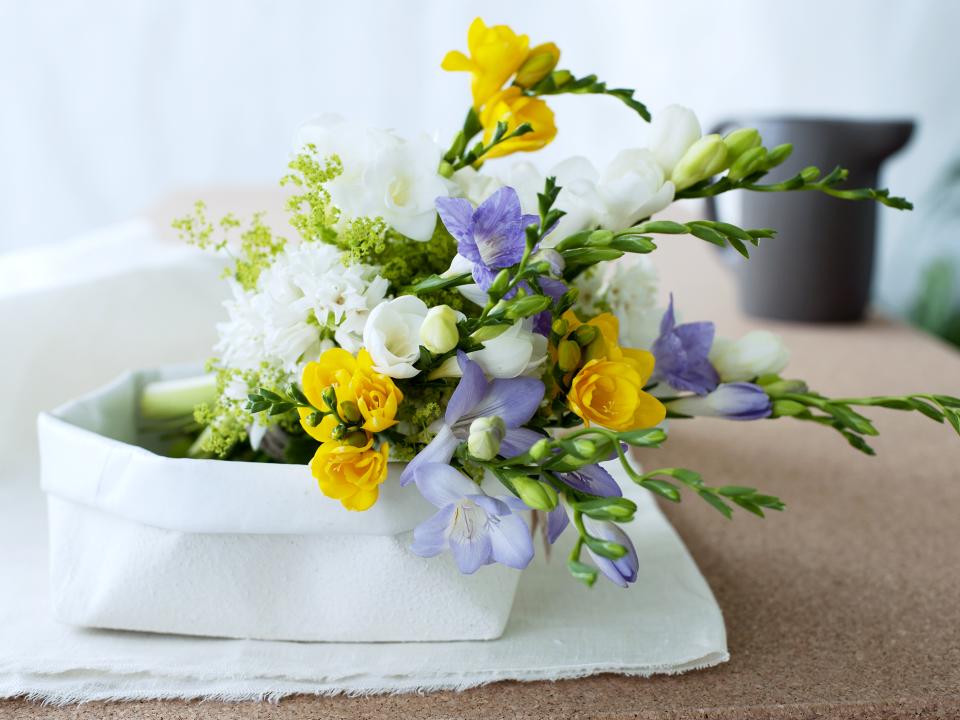
LOCATION AND CARETAKING OF FREESIAS
Caring for freesias isn't difficult and doesn't require a green thumb, so don't be intimidated! Check out the tips on location and caretaking of freesias below:
- Freesias thrive best in a sunny or semi-shaded spot, ideally where they get 6-8 hours of sunshine a day.
- Choose a spot with well-drained soil, so make sure water can drain easily. This will prevent the freesias from rotting.
- Water potted freesias regularly, making sure the potting soil is neither too wet nor too dry.
- Outdoors, water freesias as needed. Adjust the frequency of watering to the weather conditions. Make sure the garden soil is neither too wet nor too dry.
- Check freesias occasionally for aphids and fungal diseases. In general, freesias are not very susceptible to pests and diseases, but treat them appropriately, preferably organically, if necessary. Extra tip for aphids: prevent and/or control ants, because as long as ants are present, aphids will be difficult to control.
WHAT DO YOU DO WITH FREESIAS OVER THE WINTER?
As freesias are not hardy (frost-resistant), it's advisable to protect them from the first frost (e.g. from October). You do this by removing the bulbs from the ground and storing them in a cool, dry place during the colder, frost-prone months. In spring, you can replant the bulbs. Check out the step-by-step plan for overwintering your freesias here:
- Carefully dig out the freesia bulbs without damaging them (do this in autumn, before the first frost occurs).
- Carefully remove excess soil from the bulbs (e.g. with a brush) and remove any dead stems or leaves with clean, sharp secateurs.
- Let the bulbs dry in a dry, well-ventilated place.
- Place the bulbs in a dry, cool place such as in a wooden box in a shed, cellar or garage. Note: it shouldn't be too cool and humid or the bulbs will rot, but it shouldn't be too dry and hot either, as this will make the bulbs harden.
- Check the bulbs occasionally for signs of rot, mould or desiccation (and remove any rotten ones to prevent spreading).
- Is it time to plant? Check the bulbs for dead roots or leaves and remove them with clean, sharp pruning shears.
- Plant the bulbs back into full soil or in a pot in mid-May, when the soil has warmed up and frost has passed.
HOW AND WHEN SHOULD YOU PRUNE FREESIAS?
Freesias don't need to be pruned, but that doesn't mean you should leave the plant entirely to its own devices. Prune the spent stems back to just above the ground after they flower. Any dead or damaged leaves should also be removed. You can leave healthy leaves until they turn yellow when you take the bulbs out of the ground to overwinter (around October).
Do you want to pick or harvest freesias from your garden to put in a vase? The moment to cut them is when the colour appears in the freesia's bud, but the buds are still closed. This will increase your chances of getting the most beautiful and longest-lasting blooms. Always harvest flowers in the morning or evening, never at the hottest time of day.
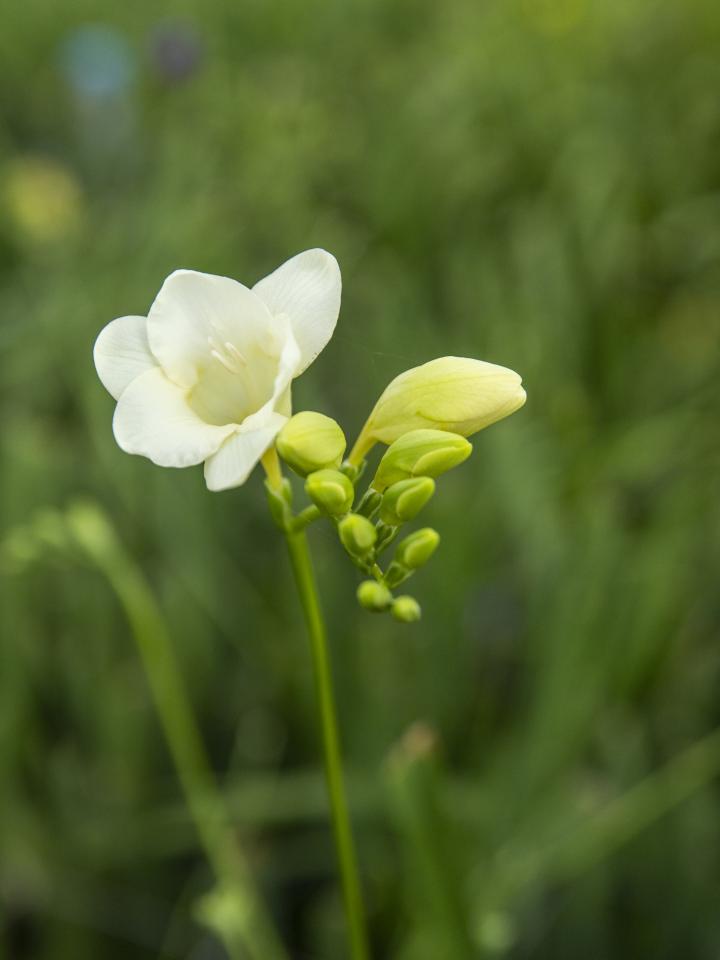
MEANING OF FREESIAS
The freesia (regardless of which colour) symbolises honour, innocence and unconditional love. It was once traditional to give freesias as gifts on your seventh wedding anniversary, because after seven years there is be a turning point (derived from ‘seven fat and seven lean years’). Freesias are thus used to reaffirm the innocence and honour of love. The lovely, sweet fragrance of the flowers is an extra fine touch and does justice to its loving symbolism.
ORIGIN OF FREESIAS: WHERE DO FREESIAS COME FROM?
Freesias are native to the Cape Colony, a British colony around Cape Town in present-day South Africa. Freesias are also native to other areas of Africa, such as Kenya. In South Africa, the flower was called ‘Cape lily of the valley’. The flower was discovered by German botanist Ecklon in the Cape Colony around 1830. Ecklon named the flower after a friend of his, German botanist and physician Friedrich Freese.
The freesia was introduced to Europe in the mid-19th century. There, the flower quickly became popular for its graceful blooms and pleasant fragrance. Dutch growers played an important role in spreading the freesia in Europe and it has traditionally been cultivated there, especially in and around the Westland region. By selective breeding and developing hybrids, Dutch growers succeeded in developing better freesias with larger and more strongly scented flowers.
During the 20th century, the popularity of freesia further increased and freesia cultivation grew in the Netherlands and other countries in Europe. Today, the freesia is still a popular cut flower and garden plant.
ARE FREESIAS POISONOUS?
The aboveground part of freesias (the flower and stem) is not considered toxic to humans and animals, but intensive contact can cause skin irritation in people with sensitive skin. Ingesting freesia bulbs can be toxic to humans and animals. Keep them out of reach of children and pets.

